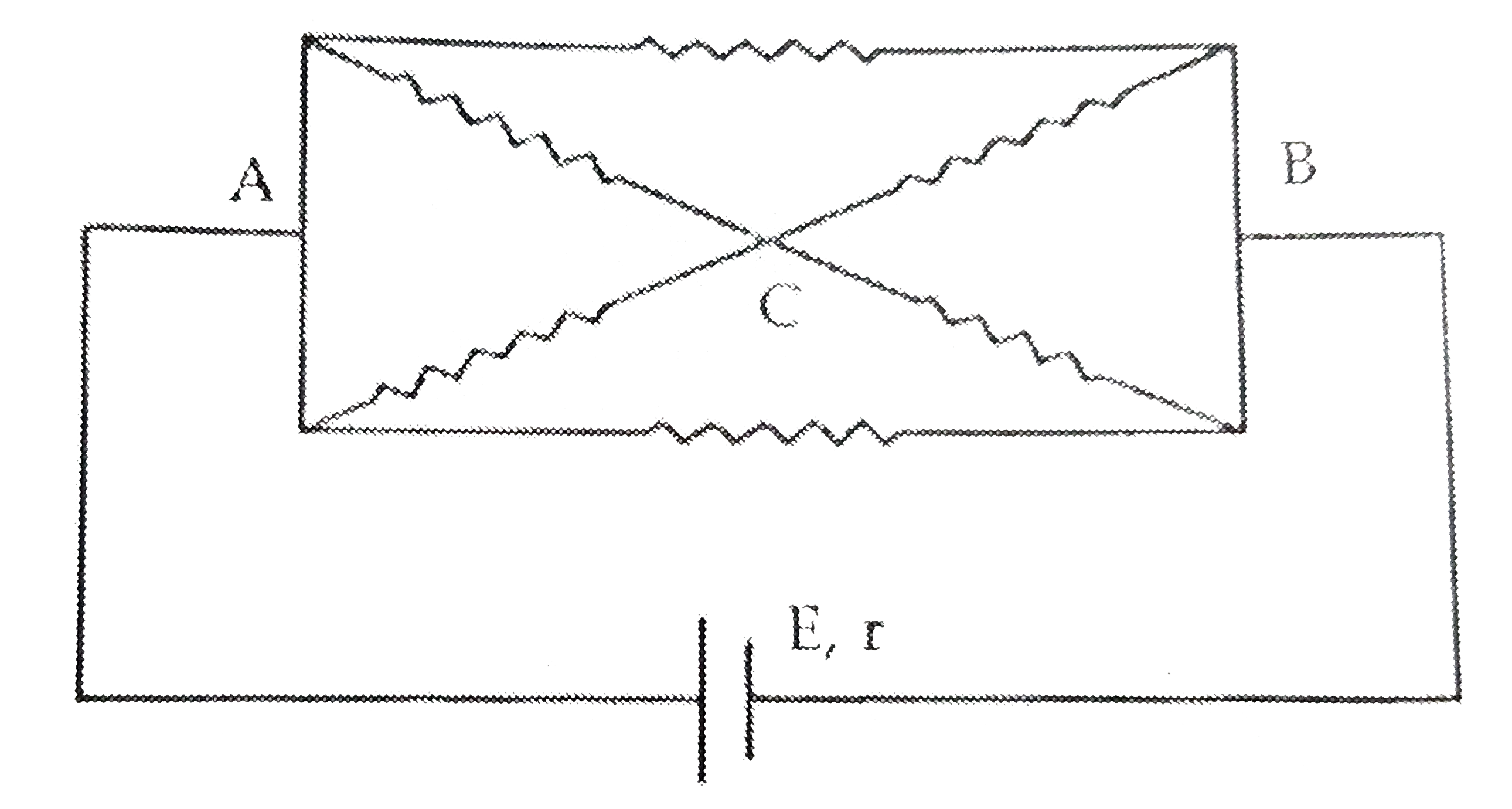State Kirchhoff's rules. Explain briefly how these rules are justified.
Step-by-Step Solution:
Step 1: State Kirchhoff's Junction Rule (Current Law)
Kirchhoff's first rule is known as the Junction Rule or Kirchhoff's Current Law (KCL). It states that at any junction in an electrical circuit, the sum of currents entering the junction is equal to the sum of currents leaving the junction. Mathematically, this can be expressed as:
∑Iin=∑Iout
This means that if a current I enters a junction and splits into currents I1 and I2, then:
I=I1+I2
Step 2: Justification of the Junction Rule
The justification for Kirchhoff's Junction Rule is based on the Law of Conservation of Charge. This law states that the total electric charge in an isolated system remains constant over time. Since charge cannot be created or destroyed, the amount of charge flowing into a junction must equal the amount of charge flowing out.
---
Step 3: State Kirchhoff's Loop Rule (Voltage Law)
Kirchhoff's second rule is known as the Loop Rule or Kirchhoff's Voltage Law (KVL). It states that the algebraic sum of all potential differences (voltage) in any closed loop of a circuit is equal to zero. Mathematically, this can be expressed as:
∑Vsources=∑Vdrops
This means that the total voltage supplied by sources (like batteries) in a loop is equal to the total voltage drop across resistive elements (like resistors).
Step 4: Justification of the Loop Rule
The justification for Kirchhoff's Loop Rule is based on the Law of Conservation of Energy. This law states that energy cannot be created or destroyed, only transformed from one form to another. In the context of electrical circuits, the energy supplied by the voltage sources must equal the energy lost due to the potential drops across the components in the loop.
---
Kirchhoff's first rule is known as the Junction Rule or Kirchhoff's Current Law (KCL). It states that at any junction in an electrical circuit, the sum of currents entering the junction is equal to the sum of currents leaving the junction. Mathematically, this can be expressed as:
∑Iin=∑Iout
This means that if a current I enters a junction and splits into currents I1 and I2, then:
I=I1+I2
The justification for Kirchhoff's Junction Rule is based on the Law of Conservation of Charge. This law states that the total electric charge in an isolated system remains constant over time. Since charge cannot be created or destroyed, the amount of charge flowing into a junction must equal the amount of charge flowing out.
Kirchhoff's second rule is known as the Loop Rule or Kirchhoff's Voltage Law (KVL). It states that the algebraic sum of all potential differences (voltage) in any closed loop of a circuit is equal to zero. Mathematically, this can be expressed as:
∑Vsources=∑Vdrops
This means that the total voltage supplied by sources (like batteries) in a loop is equal to the total voltage drop across resistive elements (like resistors).
The justification for Kirchhoff's Loop Rule is based on the Law of Conservation of Energy. This law states that energy cannot be created or destroyed, only transformed from one form to another. In the context of electrical circuits, the energy supplied by the voltage sources must equal the energy lost due to the potential drops across the components in the loop.
Similar Questions
(i) State the two Kirchhoff's laws, Explain of the briefly how these rules are justified.
(ii) The current is drawn from a cell of emf E andinternal resistance r connected to the network of resistors each of resistance r as shown in the figure. Obtain the expression for (i) The current draw from the cell and (ii) the power consumed in the network .

View SolutionExplain briefly :
Pulse.
View SolutionExplain briefly the pollinium.
View SolutionExplain briefly the superconductivity.
View SolutionState Hardy schulze rule.
View SolutionKirchoff's junction rule is a reflection of
View SolutionKirchoff's junction rule is a reflection of
View SolutionBriefly explain the Allele
View SolutionState kirchhoff's law of blakc radiations.
View SolutionWhat is Huckel's rule ?
View Solution
